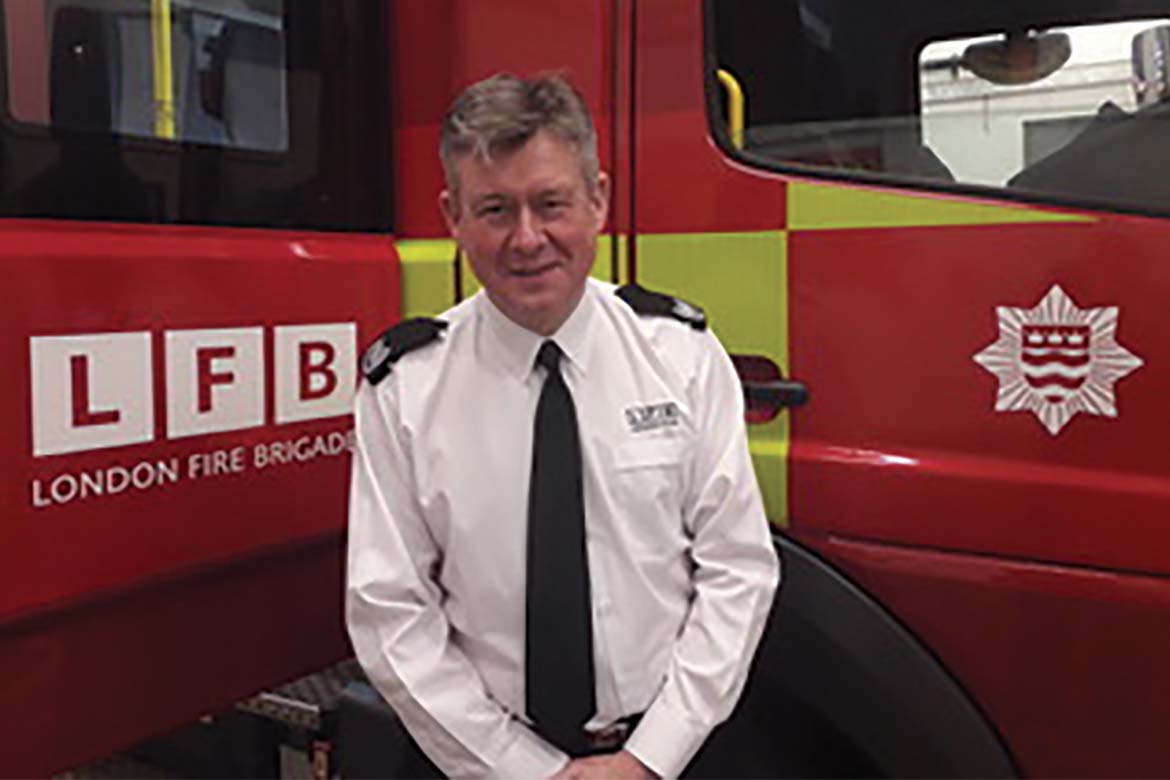Interview with David Bulbrook: London Fire Brigade, City of London
We interviewed David Bulbrook, Borough Commander in the London Fire Brigade responsible for the City of London, to learn more about today’s fire and rescue service and how business can prepare for emergencies.
In a business or corporate setting, fire prevention and security often go hand in hand, both in terms of roles and responsibilities and risk planning.
David Bulbrook is the Borough Commander for the London Fire Brigade in the City of London, responsible for operational response and a raft of other local and national initiatives to keep people, buildings and critical national infrastructure safe.
The City of London is where more than 500,000 people are employed and their safety is very much at the heart of much of the building development going on there. David comments, “These building are built to an incredibly high specification and there is a lot put in place to protect people from fire that is largely invisible. For every building there is a fire strategy and provided the building is properly built, operated and maintained, this will be effective.”
The fire service makes it clear that when responding to an incident, they are equal partners with those people responding at the location. David Bulbrook says, “They have all the information about hazards, access routes and how the building works.” So how can you be best prepared to work in partnership with the fire service should an incident occur?
Sharing Operational Information
A key task for the local fire service is to gather operational information for the major locations in the area they are responsible for and the hazards that firefighters may face. Representatives from those locations will be required to share this essential information when firefighters visit: “They assess the firefighting facilities, nearest water supplies, and the operational tactics we will use at that location.” This information is held on a central database accessible by all fire stations in London and a mobile terminal installed in each fire engine and is available to Incident Commanders on the way to an incident.
Identify your Responsible Person
An important first step for businesses to prepare to respond to any emergency incident is to identify the Responsible Person. David explains, “When the emergency services arrive, this person should be able to explain what’s gone wrong, where the incident is, why has it occurred and whether there are people involved. Provide the best information you can on what’s happened, the what, where, why, how. If the fire brigade is involved in any meaningful way, we bring in a command unit, and invite the Responsible Person to join us to help manage the risks associated with the building, look to business continuity and support the mitigation of the incident.”
Irrespective of the size of your business, identifying the individual to take on this role is key. “If you run a corner shop and can say ‘I don’t have cylinders in here, everyone’s evacuated and the fire started in the kitchen’, this would be a great example of someone who can clearly communicate with us as soon we get there.”
Understanding how the blue light services work together
The fire and rescue service works very closely with other emergency responders. The London Emergency Liaison Panel (LESLP) manual fully explains how the emergency services respond. “This a very useful document, providing helpful guidance. It provides plans for the London blue lights and businesses can tailor their plans to marry into that.”
For non-standard, non-conventional incidents, like some recent terrorist incidents, the fire service trains alongside specialist police units, military and other partners. “For example, we can help evacuation to a place of safety and support the ambulance service with immediate first aid. A Command Centre is established with the senior police officer, the incident commander for fire and ambulance, and between us we deploy our resources.”
Clear Communication about evacuation
David believes the clear communication about evacuation measures is critical. Are all staff aware of the different alarm signals and messages that may be used and that this may vary from floor to floor? Additionally, “Some types of emergency require evacuation; are staff aware of differences and how they will be communicated?” It is particularly important when organisations occupy new premises to develop this awareness quickly.
Develop Business Continuity and Emergency Plans
Returning business to normal is important, especially in the City of London and the fire service understands that: “We want to impact as little as possible in terms of dealing with incident. We want to make sure at the earliest stage, that we scale down and support companies with their emergency plans.”
Every business has responsibility to develop its own business continuity and emergency plans. If you need support, you can get in touch with your local fire and rescue service, but principally it is the responsibility of the business or organisation.
David concludes, “The two most important assets of any business are its people and buildings. It is essential that companies employ high standards of safety and security to keep their people safe. We are there to support these efforts and when people call for help, we respond.”
Andrea Berkoff
See also:
The best protection against fire: sprinkler systems

